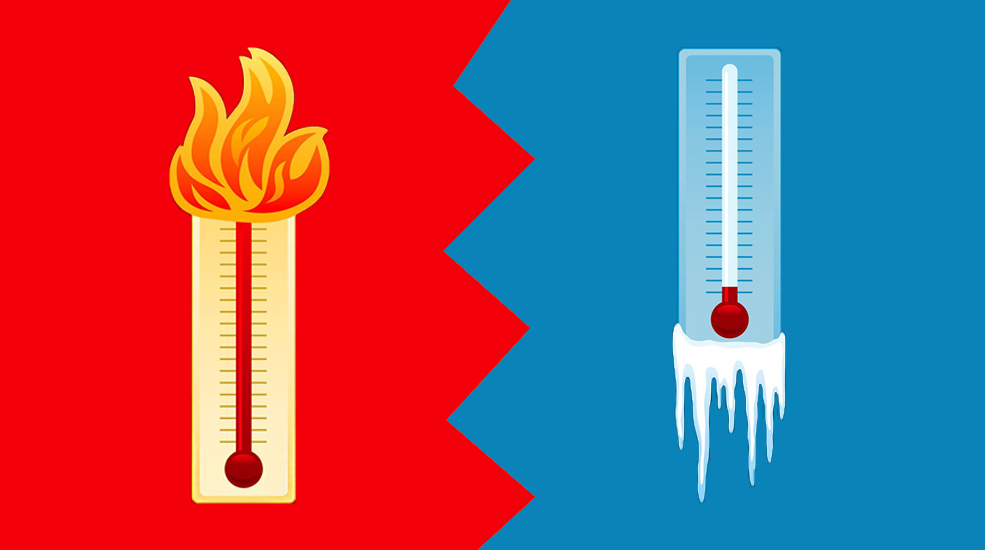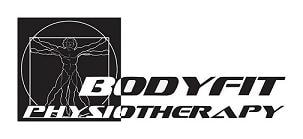
HOT or COLD?
Have you rolled an ankle? Sustained a fall? Banked your elbow? Aching shoulders? Not sure whether to grab for the heat pack or the ice pack?
One of the most common questions we get at our physiotherapy clinic is this – “Should you use a heat pack or an ice pack for your injury?” Applying heat or cold is a simple and highly effective remedy for injuries, but you must know which to use and how to apply it safely.
Be careful not to apply coldness when the injury needs heat, and vice versa! And never apply a heat or ice pack directly to your skin. Always use a wet towel in between to prevent skin burns.
We’ve put together an article that breaks down the following:
- How does heat/cold work?
- What kind of injuries do they work for?
- How can I apply heat and/or cold safely?
- Should I use both? Or neither?
TREATMENT WITH COLD ❄
Cold therapy helps to reduce blood flow and therefore inflammation and swelling. It also assists with pain relief. As a general rule, within approximately the first three days of a new injury, cold should be applied. Heat promotes inflammation and swelling, and should be avoided for fresh injuries.
Examples include any bodily bruises, ankle sprains, and knee replacements post-surgery, where swelling may persist.
Methods of cold therapy include:
- Ice packs (use towel in between)
- Cooling gel packs (use towel in between)
The general guideline for ice application is on for 10 minutes, off for 10 minutes and repeat every 2 hours for the first 3 days after a new injury. Leaving an ice pack on for too long or not using a wet towel in between can put you at risk of skin burn and/or even frostbite in severe cases.
DID YOU KNOW? A cryocuff is a type of cold compress in the form of a cuff, similar to a blood pressure cuff, that is wrapped around the swollen or painful body area. The cuff is filled with ice cold fluid. The cold compression helps decrease pain, swelling, and muscle spasms. It is used after an injury, physical therapy sessions, or surgery. – Source: https://www.drugs.com/cg/cryocuff.html
TREATMENT WITH HEAT 🔥
Heat improves circulation and blood flow, to relax and increase muscle flexibility. For sustained injuries that have yet to fully heal (but are no longer bruised or swelling), heat therapy is best for relieving stiffness in muscles and soothing aches. Because heat relaxes the muscles, using heat before stretching can also increase effectiveness and make it easier for you to stretch.
Remember, “heat” really just means very warm. Don’t apply anything that is too hot for your skin!
Examples include morning pains associated with back and neck injuries, which would benefit immensely from heat application.
Localized injury:
- Steamed towel
- Wheat heat pack (use towel in between)
- Hot water bottle (use towel in between)
For the whole body:
- Hot bath
- Sauna
Generally, 20-30 minutes is long enough, but feel free to apply heat for as long as it takes to soothe the pain, as long as it does not burn the skin. *** It is very important that heat is NOT applied to open wounds ! (ie. cuts and abrasions).
SHOULD I USE BOTH?
Maybe so! For example, for a stiff neck injury, it maybe still be useful to first apply cold for temporary pain relief before applying heat to relax the muscle.
The most important rule is- DON’T use heat on fresh injuries or any injuries that are still bruised or swollen!
SHOULD I USE NEITHER?
Once again – if your injury is an open wound (abrasion or bleeding), DO NOT USE HEAT!
If you have the following pre-existing conditions, please do not use heat or cold therapy and instead, consult your GP first:
- Diabetes
- Dermatitis
- Heart disease
- Hypertension
- Multiple sclerosis
Anyone with numbness or poor skin sensitivity should avoid using heat or cold therapy. Being unable to feel the temperature of your skin means that the risk of getting skin burn is high. *This includes diabetes patients.
Heat and/or cold therapy is often part of our treatment here at Bodyfit Physiotherapy, but remember not to rely on it alone! You will still need to do appropriate exercises for your injury as part of a bigger treatment plan.
If you’ve had an injury you are finding difficult to recover from, and heat and cold therapy haven’t worked, it may mean that it’s time to see a professional.
If you have any questions, or would like to book for a free assessment with us, please call (09) 532 8942 to speak to one of our friendly staff.
